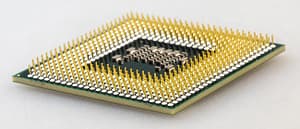[ad_1]
India is currently heading in the right direction after missing several opportunities in the past, said Minister of State for Electronics and Information Technology Rajeev Chandrasekhar on Thursday, talking about the second edition of the global summit, Semicon India, which will be held in Gandhinagar, Gujarat, from July 28-30.
Over 200 top delegates and leading semiconductor companies around the world are attending the summit, even as, Indian startups, semiconductor talent and capabilities will be on display.
He said: “India’s story of semiconductors, the vision of India being a semiconductor nation, started 19 months ago for the first time. We are on track to do it in the next 10 years with this $10 billion, what countries like China did with $200 billion dollars and took 25-30 years, but could not succeed.”
Chandrasekhar then highlighted that in 1960, during the semiconductor revolution, Fairchild Semiconductor considered building a fab in India, but “bureaucratic lethargy chased them away to Malaysia”. Two years later, BEL’s lab for silicon and germanium transistors couldn’t compete with cheaper ICs from China, Taiwan and South Korea, leading to multiple unit shutdowns.
India’s VLSI facility Semi-Conductor Laboratory (SCL) perished as a mysterious fire in 1989 halted production until 1997. Then in 2005, a multinational semiconductor player attempted to start operation in the southern part of the country, but it did not work out and the project moved to China, resulting in the loss of a semiconductor facility and 4,000 jobs.
In 2006, after the UPA government failed to formulate a credible policy for semiconductors, India missed out on a multibillion-dollar chip plant by Intel. Craig Barrett, then chair of Intel, stated that the Indian government’s slow response caused them to miss the window to commit their manufacturing capacity.
However, the minister also noted that experts predicted the semiconductor industry to contribute 6.3% of India’s GDP by 2010, but again because of lack of policy India’s chance of achieving self-sufficiency in semiconductor production was lost.
In 2011, the government invited an Expression of Interest (EoI) for a semiconductor fab, but it resulted in a failed attempt as the government did not take further action. Two years later, the World Semiconductor Council (WSC) urged then PM Manmohan Singh to make India a driver of high-tech exports and manufacturing, including semiconductors. But no action was taken at that moment. In the same year, the Fab City, which was launched with fanfare, remained a pipedream.
Chandrasekhar said: “It is very important to note that in 1987, India was just two years behind the latest chip manufacturing technology. Today, we are 12 generations behind.”
However, he then highlighted the milestones achieved by the current government which include approving the Semiconductor India Program 2021 and launching of Digital India RISC-V (DIR-V) program aiming to develop next-generation processors.
Additionally, he said that under SemiconIndia futureDESIGN Design Linked Incentive (DLI) Scheme over 30 semiconductor design startups have been set up in India, five startups have already received financial support and another 25 are being evaluated for their next-gen products.
The minister also highlighted the recent projects and commitments made by Micron Technologies, Applied Materials and Lam Research, as well as several proposals in ATMP and fabs, which are being evaluated by India Semiconductor Mission, decisions being made to modernize the SCL facility in Mohali and set up a global standard India Semiconductor Research Center (ISRC).
He said, “This is the report card of what has been done in the last 19 months of this government versus in 60-70 years of what had happened.”
[ad_2]
Source link




